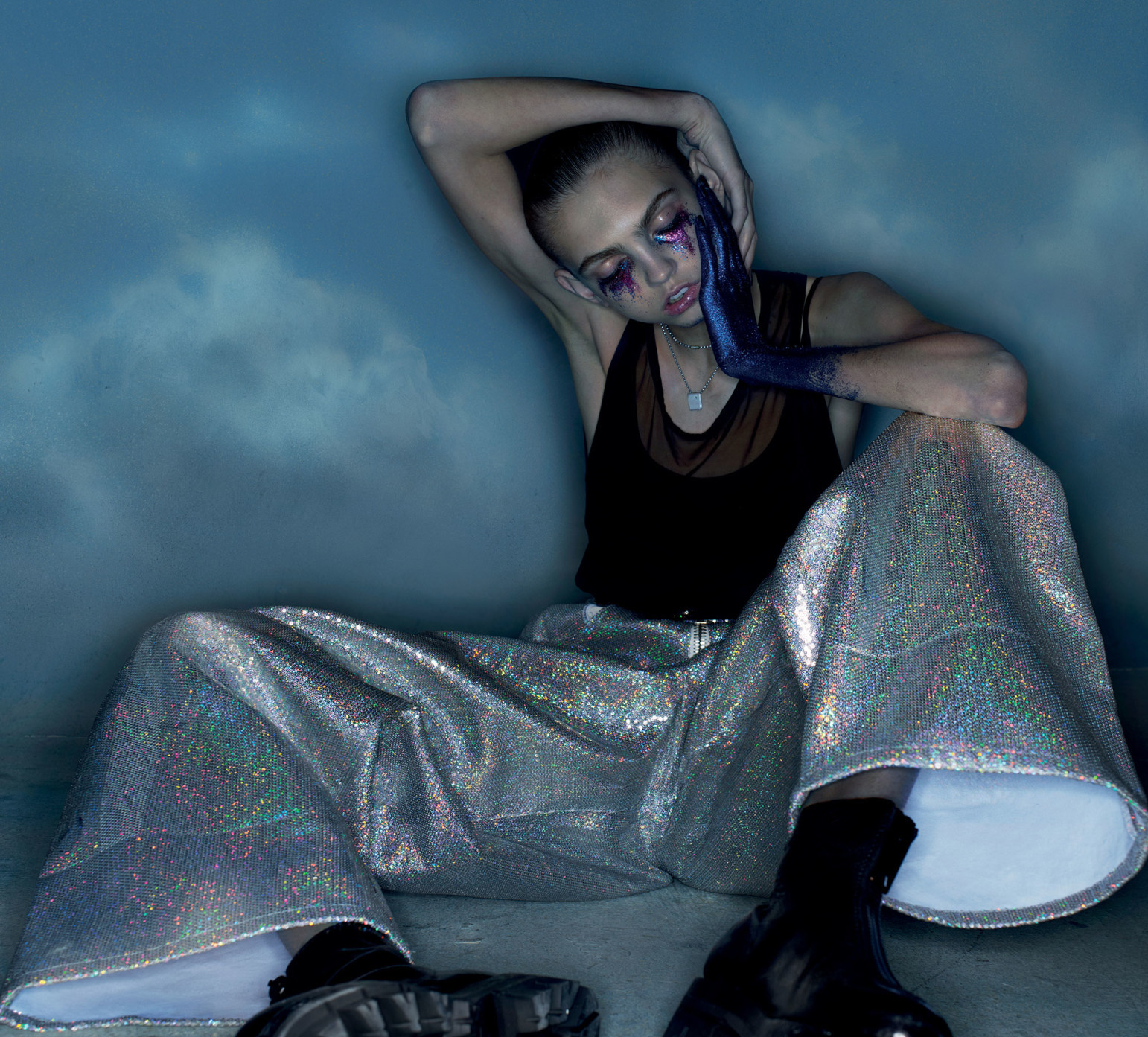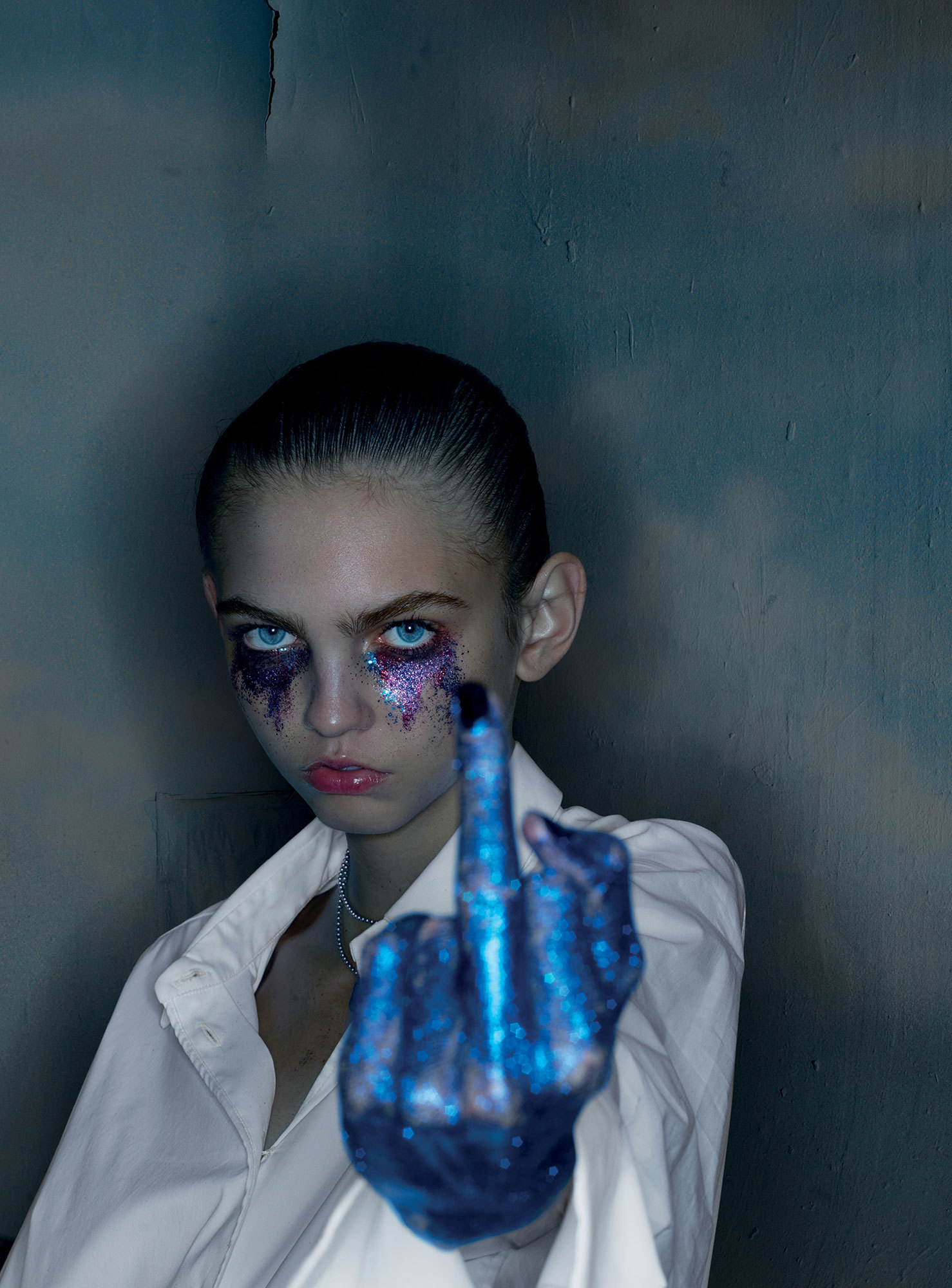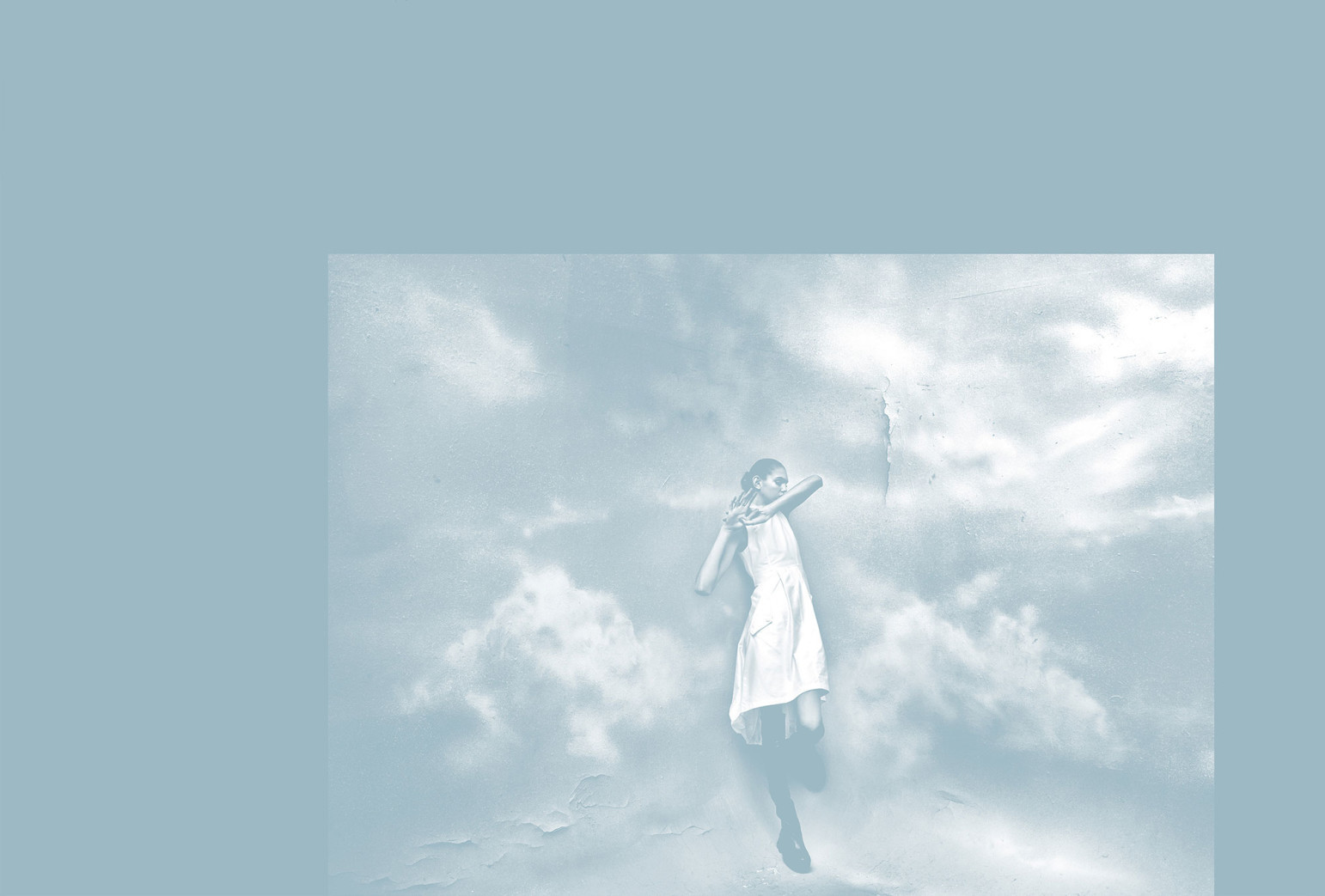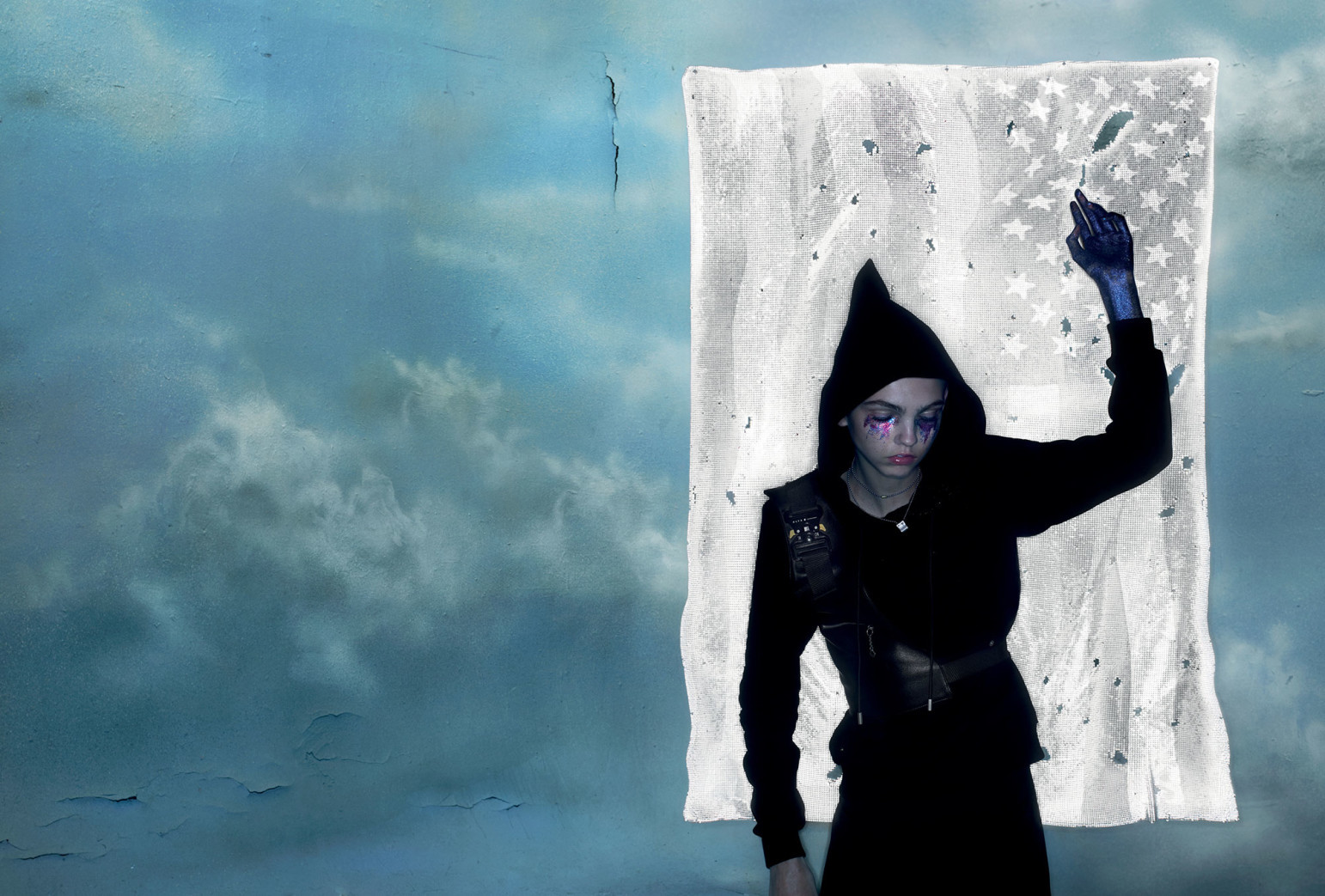Over the past week, Matthew Williams and Nick Knight have released a videographic and print catalogue contextualizing ALYX’s spring/summer collection SPECIAL PROBLEMS. As the second installment of an ongoing series, the two aim to create something that could exist in both physical and online forms. For this edition they looked at heroine and model-muse Molly Bair, who stars in an intimate and uneasy portrait circulating around her personality online and IRL. Earlier this year, we caught up with Williams, the brand’s creative director, in Paris to discuss the importance of taking things slow and focusing on your own path.
After years of working in both the fashion and music industries, when and how did you decide to launch ALYX?
It’s been something I’ve wanted to do since I was seventeen. I think everything that I’ve done up to this point, since dropping out of college, and beginning to work in the industry, has been an effort to get to a place to start this brand. So every choice has been for this. I wanted to transition out of working in music, into completely working in fashion, which is where I started.
Was there a particular turning point for you?
I think getting married and having my second child. I just wanted to begin my own project, something that was more a reflection of me personally and less collaborative because, aside from my photography, up to that point, my work was really collaborative.
In a way you are building a home.
Yeah, exactly.

Rather than a generated theme, would you refer to the vision behind the collection as a personal reflection?
My wife is my eternal partner and my eternal muse, we’ve been together for ten years. This is also a reflection of modern-day classics for us. In a way, each piece I design is something I want women to be able to have in their wardrobe forever. And the base is, things have to be made impeccable, amazing. And then we can push fashion-forward. From that, we can create something. That’s where I want to build from. It takes time, in this world now, where everybody sees what we do … I’ve been fighting it, because I did things that were known when I was 21. People have seen everything I’ve created. There is no freedom to create in a bubble like that. This is the third collection now; I’m not saying I’m the greatest designer in the world — it’s gonna take time. It takes time to create the codes and to find the voice. Dries Van Noten worked on around 10 collections before he began showing in Paris. Hedi and Raf started their brands when they were my age.
Speaking of codes and finding a voice, how important is it for you to create an ALYX world beyond clothing?
That’s the whole point of why I began designing — having the clothing be a projection of who you are on the inside. I know that that’s actually kind of a bad thing, that’s been indoctrinated through Freudian concepts to make people want clothes. But if you don’t use it too excessively and buy more than you need, these clothes can still be a projection of your self — the idea of creating this world from photography to the hardware having alternative uses in daily life, or like, the buckles meaning something. Whatever that personal monologue or dialogue in my head is, I’d like to try to have it at least be a full picture. Not just making pretty things.
That’s what we see in the garments. It goes beyond beauty, and celebrates the rebellious mindset of youth.
Natural Order is the name of the collection. It means the absence of law. It means Anarchy. Natural Order is the law of the earth, above human law. That’s where the flower prints come from, too. Flowers represent both earth and death, and the beginning. Most of our inspiration is personal. You’ll find Zero Skateboards, or a shirt that says “Fuck You” based on a print from Shorty’s, another skate brand I grew up with. My grandma bought this shirt that says Shorty’s Skateboards, and when you were in class, you’d flip it and reveal the hidden message to the teacher. Then the belts come from Six Flags’ Magic Mountain, the roller coaster park. It’s the seatbelt that straps you into the roller coaster ride. In California when you have a graduation, the whole school will go to the roller coaster park and celebrate. It’s a place that symbolizes a loss of innocence. You may have your first kiss, or get drunk for the first time — or get over your fear. Still, the belt is just an object. I want people to find their own meaning in this stuff. It’s not so serious either — we’re making clothes.

In the end nothing means anything.
Yeah, exactly. It’s just a beautiful object, and it happens to have some personal meaning to me. There are so many things that I could talk about. But I guess what I’m trying to say is, I like putting these subcultural codes into a collection. For me it’s like little specs of dust that bring some kind of x-factor of energy into the clothing, whether people know what it is, where it comes from, or not. Like when Lee McQueen put a lock of hair into his first labels. I like the idea that these clothes have been touched by their maker. And I don’t care if you recognize the symbols or not. I don’t like explaining. I want people to find their own meaning in it. The only thing that’s important to me is that this has has its own voice, and my own voice. And that I’m living out loud what I feel, through my work. I am just producing and creating from a very pure and honest place — without an idea of what people think, or an idea of whether these clothes are going to sell or not. This is what I believe in — and I’m really really passionate about it. At this point, this is just what I do. This is where I am in my life. I really live and breathe this every day. I just hang out with my family, and do this, and my family works on this with me.
This collection in particular feels a lot like a montage of memories.
Yeah, even down to the label. This “A” is from the Black Flag logo. I always mark each collection with subtle things like this. Hopefully as time goes on, fans will be able to recognize each season by these details.
Are your garments more of a product of your already existing world, rather than the other way around?
Yeah, you’re completely right. And those things reveal themselves — what we should be making, too. And also from the interaction and the engagement of the people wearing them. You know, when somebody wears the clothes — or when the clothes are wearing somebody? You can really see that. But I also want to stress that this is only the third season. Let’s have a conversation about DNA in five years from now when a real foundation has been built. I would even consider this collection our first — for the first time I have been able to have all our categories at a top level. I have really been focusing on having manufacturers, and fabric technicians make fabric from the specific region that they are good at. So there’s wool from Britain, something the British military have used for years. Then suiting from Scotland. Even on the rack it already has this texture to it. You can’t fake this. Everything. I care about things being substantial on the rack. It has taken a long time, two years, to get it to that place.

Or even longer.
If you take that into account, 11-12 years to be exact.
Within these years you have been working with a remarkable amount of people, both in fashion and music. How have you nourished and maintained your distinct sense for collaboration?
I think it’s curiosity. Also as men, it’s in our nature to learn from a father figure or an elder, to be a peer. And also to pass on our knowledge to the future leaders. And I think that it’s just part of that process and that discussion that collaboration breeds communication within all different age groups, so it keeps a level of curiosity in your life. And I think the only way for life to continue to be exciting as you get older, is to continually maintain curiosity inside yourself, and for the world. Or the world can become a very dark and lonely and boring place. Which I know — everyone has been in that mindset.
As a brand today you have every reason to maintain that curiosity. What’s the role of collaboration at ALYX?
Everybody is important, from the person at the factory that sews that piece, and their belief in the project, to the person that makes the hardware. I think collaboration is important in everyone’s project. From the outside it may always look like somebody was doing it single-handedly. It’s about everybody in the supply chain — from the communication to the manufacturers believing in the project.
What is your motivation to work with big names such as hiking boots manufacturer Rowa, with Dickies or Alpha?
I come from a product background. My first job in fashion was a Product Manager, so first thing bare minimum of anything is that it has to be product — and made to the highest degree. If I want to make a bomber jacket at an Italian factory, there’s still a soul that’s lost in it. I don’t want to try to fake and have something look like an Alpha. Let’s just make it with Alpha. Or that fabric the Dickies shirt is made of, I don’t know how I could even find it, or have it mass-produced in that way.
Go for the real thing.
Yeah, and they are things that actually amplify the DNA of the brand. They are also items that people can wear for many years to come – and they will still stand for this moment in time and represent something. The idea for the shirt came from the Suicidal Tendencies Tattoo shop on Sunset Boulevard. I have a Suicidal Tendencies tattoo on my ankle, and all the guys at the shop wear that shirt. It’s Jen’s and my favorite. It’s such a cheap fabric, but so nice, and remains affordable. If you can’t buy the $2,000 jacket, you can get the $100 shirt and still be part of the world that we’re creating, by having these things.

Growing so fast as a brand, is there any advice you would give young and aspiring fashion designers?
I guess, do what’s in your heart and find your own voice. Don’t let anybody else tell you who you are. Because of what I’ve done in the past, my work, I don’t think anybody would have guessed that I would be doing a project that looks like ALYX. But I’m only credited for it because I just did it. Other opportunities were, maybe, more available. Or people thought I would pursue that direction — but that’s not what was in my heart. This was in my heart, so I just did it.
With that attitude, you have made it among the top eight nominees for the LVMH Prize. How do you feel about it?
I think it’s amazing that the prize was created. It gives a stamp of approval to young designers that may or may not have been able to be noticed. It’s really the first global prize that’s chosen by experts in the field. I think it’s a really fair process, it’s a vote of a hundred experts. You have to explain your work. It just seems amazing. And the mentorship and dialogue is really, really good.
What impact do you think it could have for your brand in particular, for brands in general?
Obviously, everybody’s in a different place with their brand. Some people worked at fashion houses already and know the fashion system. There are others still producing out of their house and have no infrastructure. I don’t really know how to compare myself to others. For me, it’s the dialogue with those experts. The possibility of having them help grow my business in the best possible way in the future.
Speaking of the future, in an interview with W Magazine you mentioned your desire to eventually place ALYX on the catwalk show schedule — and bring back a spirit of discovery.
When I first moved to New York, there was no Instagram or camera phones. When you saw a fashion show, it would just be talked about. People would do anything to go to a fashion show just to be able to see how it was styled, first-hand, see the clothes move with their own eyes, hear the music, and feel the electricity in the room. I’m not claiming that the old system is right, but there needs to be a way for people to feel excited about fashion shows again. Some brands are still able to do it, but there’s not as much of a formula anymore, there’s just a way that’s right for you. I need to find what that way is for me, and what that process is for me. I want to make clothes that are emotional, and I want to present them in an emotional way, too. I’m just going to wait until an answer reveals itself to me.
Is it still a definite goal to put ALYX on a runway?
Not necessarily. Maybe there is a new version of a show, a new version of presenting.

Credits
Images courtesy of Alyx and Nick Knight
